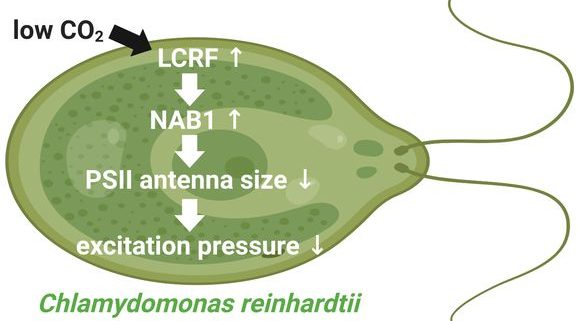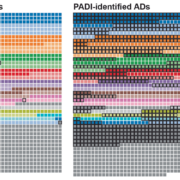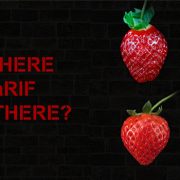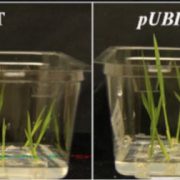How algae adjust light harvesting efficiency to the prevailing supply of CO2
By Olga Blifernez-Klassen and Lutz Wobbe, Algae Biotechnology and Bioenergy, Bielefeld University, Faculty of Biology, Center for Biotechnology (CeBiTec), Bielefeld, Germany
Background: Photosynthetic organisms are constantly exposed to a fluctuating supply of light and carbon dioxide (CO2). An imbalance of light energy input at photosystem II (PSII) and the actual demand for ATP/NADPH by carbon fixation lead to high excitation pressure and photodamage of PSII, calling for tight adjustment. At a given light intensity, light energy input is largely determined by the size of the light harvesting antenna associated with PSII, while the rate of carbon fixation and thus the ATP/NADPH demand drops when CO2 supply is limited. The photosynthetic unicellular green alga Chlamydomonas reinhardtii responds to CO2 deprivation by diminishing the size of its PSII antennae, resulting from the translational repression of mRNAs encoding PSII-associated light harvesting proteins (LHCBMs). This process is mediated by the cytosolic translational repressor NAB1, the transcription of whose encoding gene is activated under these conditions.
Question: Building upon our previous analysis of the activation of the NAB1 promoter as a precondition for antenna size control in response to CO2 deprivation, we wished to identify the regulatory elements within the NAB1 promoter and the transcription factor modulating NAB1 expression in response to changes in CO2 supply.
Findings: We identified a novel C. reinhardtii transcription factor LCRF (low carbon dioxide response factor), which belongs to the squamosa promoter binding protein (SBP) family of transcription factors. LCRF activates transcription at the NAB1 promoter by specifically binding to the tetranucleotide motif “GTAC” present in this promoter. LCRF transcripts thus accumulate strongly upon CO2 depletion, while the genetic inactivation of LCRF in insertion mutants disrupts the acclimation pattern seen in wild-type strains, which consists of a diminished accumulation of the major light harvesting protein LHCBM6, the prime target of NAB1-mediated translational repression. Antenna size truncation via the LCRF-NAB1 regulatory pathway prevents a rise in PSII excitation pressure in wild-type algal cells, whereas mutants lacking LCRF suffer when exposed to low CO2 supply.
Next steps: Future work will be dedicated to a more comprehensive description of the LCRF pathway in regard to additional target genes, connecting inorganic carbon availability and long-term light acclimation.
Reference:
Olga Blifernez-Klassen, Hanna Berger, Birgit Gerlinde Katharina Mittmann, Viktor Klassen, Louise Schelletter, Tatjana Buchholz, Thomas Baier, Maryna Soleimani, Lutz Wobbe and Olaf Kruse (2021). A gene regulatory network for antenna size control in carbon dioxide-deprived Chlamydomonas reinhardtii cells. Plant Cell, https://doi.org/10.1093/plcell/koab012










